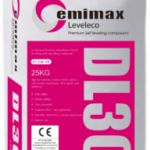Forging is an essential manufacturing process used to shape metals by applying compressive forces. This method has been instrumental in the production of high-strength components used across multiple industries. By subjecting metals to heat and pressure, forging enhances the material’s structural integrity, making it a preferred choice in sectors such as aerospace and defense, where durability and precision are crucial.
In modern manufacturing, forgings play a pivotal role in creating robust parts that can withstand extreme conditions. From aerospace and defense forgings to industrial machinery and automotive applications, forged components are known for their superior mechanical properties.
The Basics of Forging
Forging involves shaping metal through localized compressive forces, which can be delivered by hammering, pressing, or rolling. The process can be categorized into different methods, each offering unique benefits:
1. Open-die forging: A process where the metal is shaped between flat or simple-shaped dies, ideal for producing large components.
2. Closed-die forging: Here, the metal is confined within a die, which results in high-precision parts, commonly used in automotive and aerospace industries.
3. Cold forging: This method shapes the metal at room temperature, resulting in increased strength through work hardening. It is often used in producing cdw tubes and other precision components.
4. Hot forging: Heated metal is forged, providing better formability and reducing the risk of cracks, making it suitable for producing high-strength items like fire hydrant pipes.
Each forging technique offers distinct advantages in terms of mechanical properties, tolerances, and surface finish, making it a versatile solution for various industrial needs.
Applications of Forging
Forging finds applications in a wide range of industries, where high strength, reliability, and resistance to wear and tear are critical.
- Aerospace and Defense Forgings: This industry relies heavily on forged components for aircraft structures, engines, and landing gear. Forging is used to create parts that must withstand high stress, extreme temperatures, and fatigue. Forgings in aerospace applications often involve alloys like titanium and aluminum, which offer excellent strength-to-weight ratios.
- Automotive: Forged parts are commonly used in automotive engines, gears, and axles due to their ability to withstand repeated stress. The high durability of forged components ensures longer service life and safer performance in vehicles.
- Industrial Machinery: Forgings are critical in heavy machinery where strength and impact resistance are necessary for performance in tough environments.
- Oil and Gas: In the oil and gas sector, forgings are used for valves, pumps, and fittings, where the ability to handle high pressure is vital. Fire hydrant pipes also benefit from forged metal for their resilience in demanding situations.
- Construction: From large structural components to critical infrastructure like bridges, forgings are used to ensure safety and longevity.
Advantages of Forging
Forging offers several key benefits over other manufacturing processes:
1. Strength and Durability: Forged components typically have better mechanical properties than those made by casting or machining. The grain structure of the metal is improved during forging, leading to parts that are stronger and more resistant to impact.
2. Improved Wear Resistance: The compressive forces used in forging create parts that are less prone to wear and fatigue, making them ideal for high-stress environments such as aerospace and defense forgings.
3. Material Efficiency: Forging allows for more efficient use of materials, as it reduces the need for machining and minimizes waste. This is particularly important when working with expensive materials like titanium or stainless steel.
4. Cost-Effective Production: Despite the high upfront costs of forging dies, the process becomes cost-effective for mass production. The durability of forged parts also leads to lower maintenance costs over time.
5. Versatility: Forging can be used with a wide range of materials, including steel, aluminum, and specialty alloys, making it adaptable to various industries and applications.
Modern Advances in Forging Techniques
In recent years, advancements in technology have revolutionized the forging industry.
• Automation and Robotics: The integration of robotics has increased the precision and efficiency of the forging process. Automated forging systems are capable of handling high temperatures and large volumes, reducing production times and costs.
• Computer-Aided Design (CAD) and Simulation: Modern forging techniques utilize CAD software to design more accurate dies and simulate the forging process. This allows manufacturers to optimize the process, reducing material waste and ensuring consistent quality.
• Additive Manufacturing: While forging remains the go-to process for high-strength components, additive manufacturing (3D printing) is being used in conjunction with forging to create complex parts that are otherwise difficult to produce.
• Environmental Sustainability: Advances in forging now focus on reducing energy consumption and emissions, making the process more sustainable.
Challenges and Future Trends in Forging
Despite the numerous advantages, forging is not without its challenges.
• Material Costs: The use of high-quality materials, especially in industries like aerospace, increases the cost of forging. However, the superior performance of these materials often justifies the expense.
• Tooling Costs: The creation of custom dies is expensive, particularly for small production runs. This is a challenge for manufacturers serving niche markets.
• Skilled Labor Shortage: Forging requires skilled labor, and the industry is facing a shortage of experienced workers. As a result, there is an increasing reliance on automation.
Looking forward, aerospace and defense forgings will continue to benefit from new alloy developments and innovative manufacturing techniques. The rise of electric vehicles and renewable energy sectors will also create new opportunities for forged components, particularly in lightweight applications.
Conclusion
GoodLuck India stands as a trusted partner for forging solutions, ensuring top-notch quality and performance across various industries. Whether your project requires aerospace and defense forgings or specialized products like cdw tubes and fire hydrant pipes, GoodLuck India provides reliable and cost-effective solutions tailored to your needs. Choose GoodLuck India to power your business with high-strength, precision-forged components that exceed expectations.
This post was created with our nice and easy submission form. Create your post!





